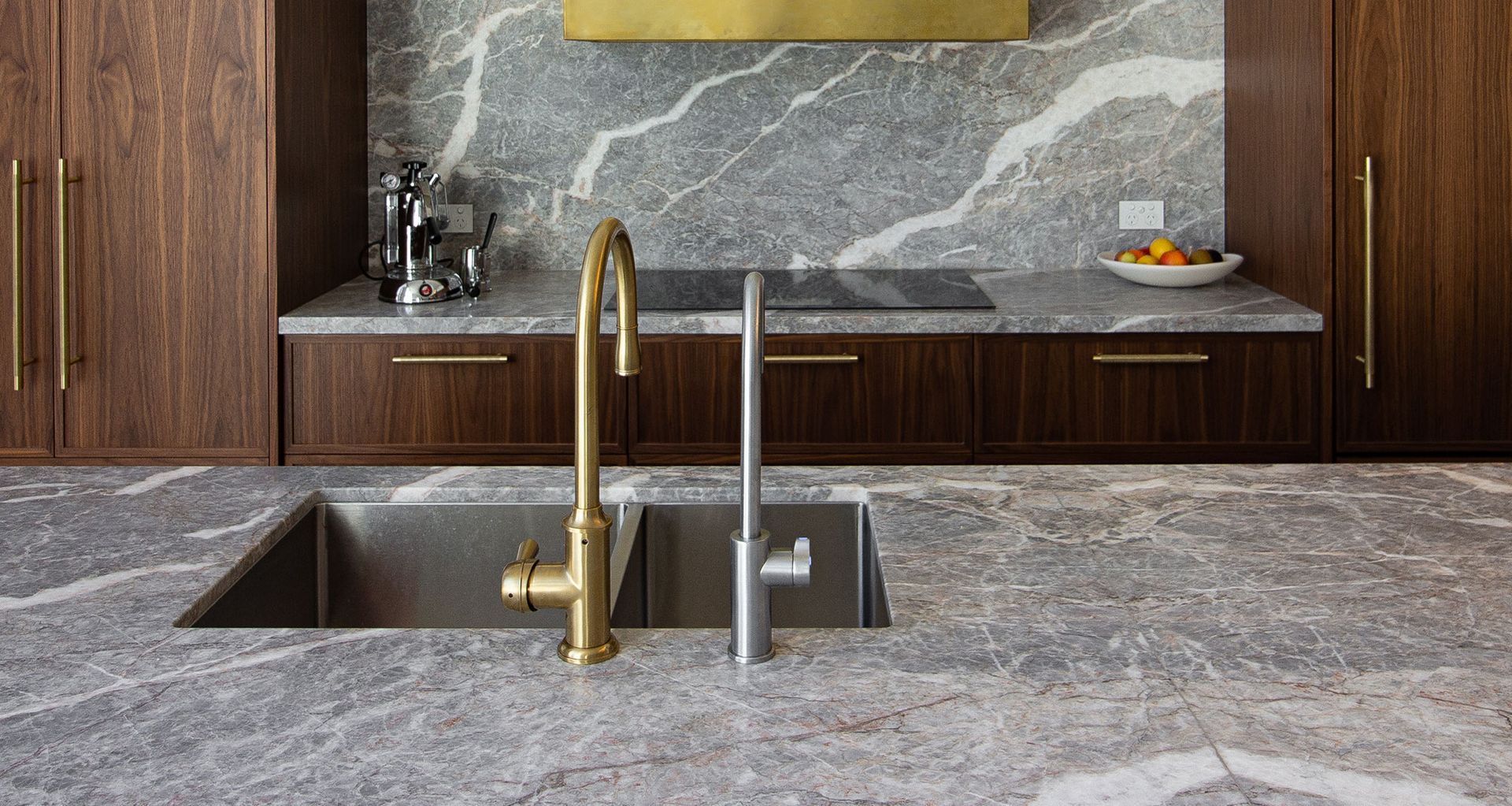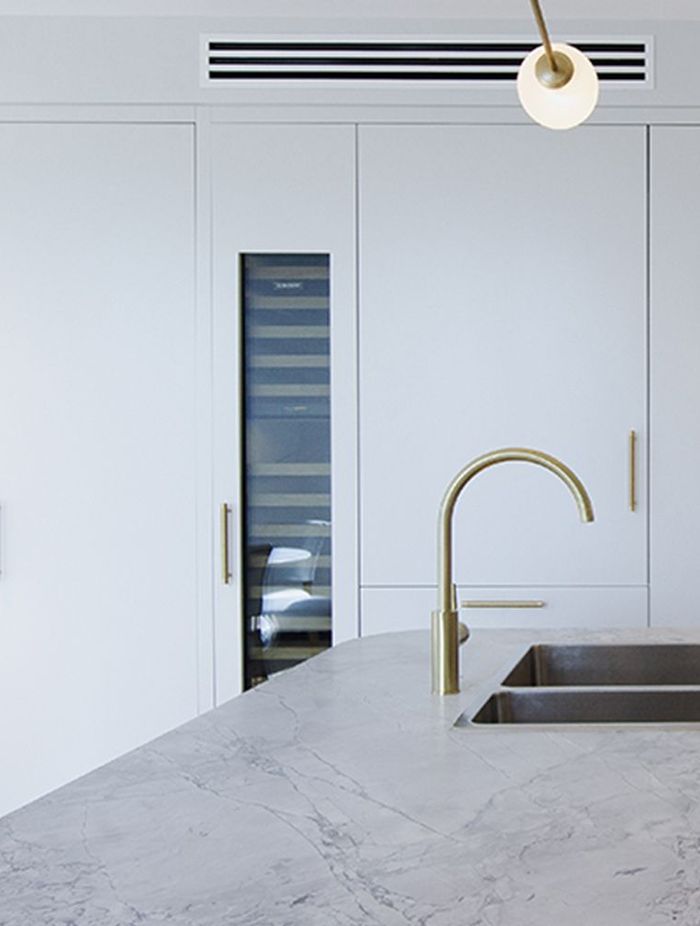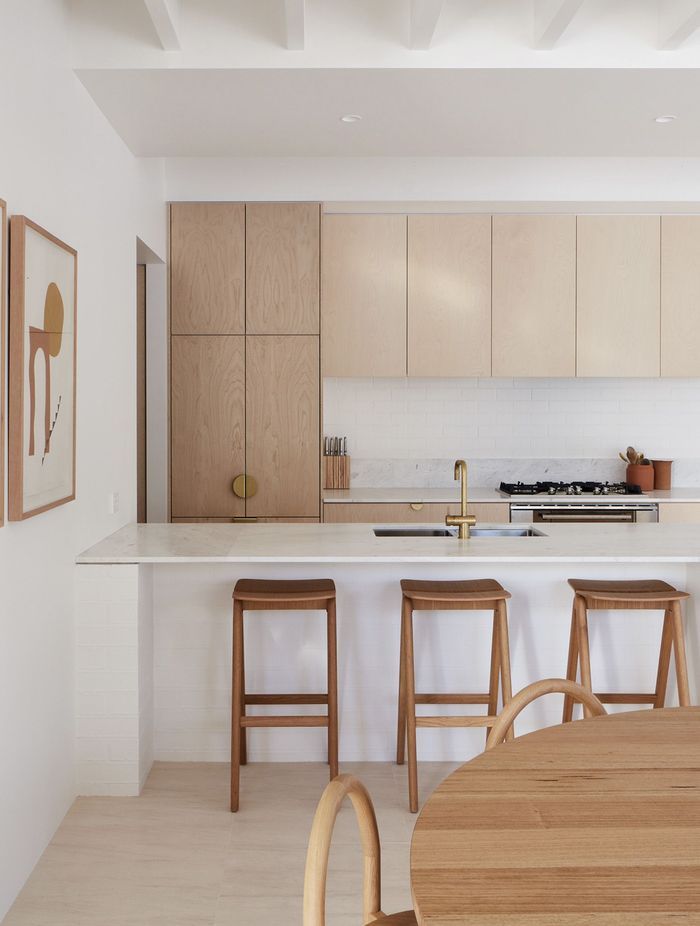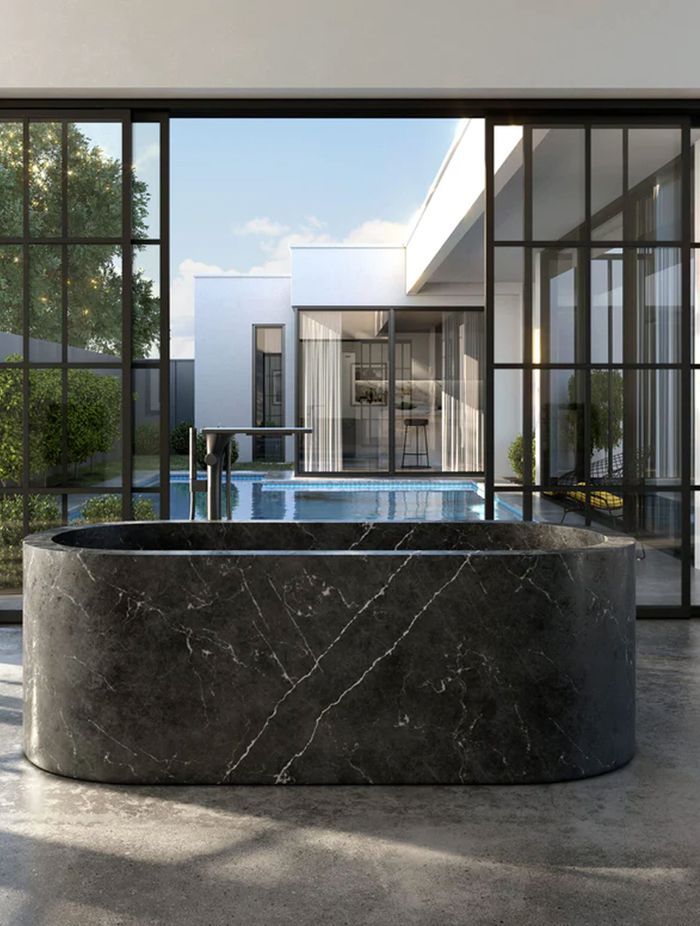Limestone vs marble: which material is better for your kitchen benchtop?

Which material is better for your kitchen counter or benchtop? This is a question many homeowners ask. To arrive at a conclusion, it's necessary to take an in-depth look at both materials, examining the unique properties, advantages, and disadvantages of each.
Limestone
Why is limestone a popular bench and countertop material?
Limestone's popularity as a material for benches and countertops is rooted in its distinct blend of stylistic, practical, and environmental attributes. Its appeal begins with the visual and tactile pleasure it offers. As a sedimentary rock, primarily composed of calcite, limestone has a naturally elegant appearance, with a range of colours from creamy whites and soft beiges to rich browns and greys. This colour palette, combined with the unique textural variations and fossils that can appear within the stone, provides an earthy, natural aesthetic that can complement a wide range of interior design schemes.
Advantages of limestone
Here are some of limestone's standout advantages:
Natural beauty
Limestone's sedimentary nature means it often contains unique features, such as fossils and impressions left by marine life. These one-of-a-kind attributes add an organic beauty and present a cool, unique choice for kitchen countertops, introducing a piece of Earth's history into your home.
Affordability compared with other varieties of natural stone
Compared to other natural stones like granite or marble, limestone offers a luxurious look at a more affordable price point.
Hygienic
Limestone is naturally resistant to bacteria and other common kitchen contaminants, helping to maintain a sanitary cooking environment. This feature can be especially appealing to homeowners concerned about cleanliness and food safety.
Disadvantages of limestone
Here are some of the disadvantages of limestone:
Softness and porosity
Even though limestone's softness contributes to its warmth and tactile comfort, this characteristic also makes it more susceptible to scratches and abrasions from daily use. Its porosity, a feature stemming from its sedimentary nature, heightens its vulnerability to stains from common household liquids, necessitating frequent sealing.
Maintenance requirements
The unique natural beauty of limestone comes at a price in terms of maintenance. Regular sealing is necessary to protect its surface from staining and water damage. This maintenance requirement can be more demanding compared to other countertop materials, potentially adding to the long-term cost and effort of having limestone countertops.
Risk of chipping
Due to its relatively softer composition compared to granite or quartz, limestone can be prone to chipping along the edges. This risk necessitates careful use and possibly periodic professional servicing to address any damage that occurs from normal wear and tear.
What's the price of limestone bench or countertops?
You'll find that limestone benches or countertops start at around $1500. Limestone costs can vary based on the type of limestone, its colour or appearance, and its grading and size.
What other applications is limestone popular for?
Exterior facades and cladding
Limestone is widely used for exterior facades and cladding because of its natural beauty, durability, and the ability to withstand various weather conditions. Its unique textures and colour variations can significantly enhance the appeal of buildings.
Fireplace surrounds
Limestone's heat resistance makes it an ideal material for fireplace surrounds. It offers a classic and elegant look that gives a fireplace a distinct appearance.
Pavers
Limestone is frequently selected for outdoor paving like walkways, patios, and driveways because of its toughness and anti-slip properties. It offers an organic appearance that harmonises with exterior settings, and its available in numerous sizes and forms.
Marble
Why is marble a popular bench or countertop material?
Marble stands out as a preferred material for benches and countertops for visual and practical reasons. Each marble piece showcases unique veining, giving you the opportunity to create a truly individual bench or countertop. Marble is also a heat-resistant material, so you don’t need to worry about placing hot pots or pans on the surface. The material can also reflect light and amplify natural light which can enhance the sense of space within smaller areas.
Advantages of marble
Here are some marble's standout advantages:
Rich patina evolves over time
Unlike most materials, marble's appearance can evolve beneficially with age. The patina that marble develops over time can add depth and character to the stone, giving it a lived-in quality that is highly valued in certain design aesthetics. This feature is unique because it means the countertop's beauty can actually enhance with time and use, rather than merely degrade.
Each slab is unique
The process through which marble is formed results in each slab having a completely unique veining pattern and coloration. This uniqueness means that no two marble countertops are ever the same, allowing for personalised kitchen designs that can't be replicated.
Heat resistance and cool surface
Marble's heat resistance is noteworthy, though not unique to this material alone. It's capable of withstanding exposure to hot items, making it a practical choice for kitchens where hot pots and pans are used regularly.
Disadvantages of marble
Here are some of the disadvantages of marble:
Increased care and maintenance for longevity
Marble requires a more rigorous maintenance routine compared to some other natural stones. This involves regular sealing to mitigate its porosity and careful daily use to avoid etching and scratching. This level of care, necessary to maintain its appearance over time, can be seen as a disadvantage for those seeking a low-maintenance countertop solution.
Repairing deep scratches and chips can be difficult
While minor scratches and chips on marble can sometimes be buffed out or filled, deeper damages are often more challenging to repair seamlessly due to marble's unique veining and coloration. This can make significant repairs more noticeable and potentially compromise the countertop's integrity.
What's the price of marble bench or countertops?
Marble counter or benchtop's cost upwards of $3000. Marble is generally viewed as a premium material hence the higher price.
What are some other popular marble applications?
Bathroom vanities and bath tubs - marble has many characteristics that make it an impressive material for vanities and baths. It is able to resist watermarks, can be crafted into custom ergonomic shapes, and has thermal insulation properties that help maintain water temperature longer, while giving vanities and bathtubs a unique appearance.
Backsplashes - marble is a popular backsplash material for the same reasons its popular for vanities and bath tubs. It's used for both bathroom and kitchen backsplashes.
Furniture - there are plenty of different pieces of furniture that utilise marble, either as a sole material or with a marble top, such as coffee tables and side tables.
Related Article: 8 different types of bathtubs for the Australian home
What are some other natural materials to consider?
Granite
Granite is one of the most popular materials for kitchen countertops as it’s tough and resistant to damage, making it great for areas used regularly. Also, each slab of granite is unique, offering distinct veining and specks of colour that can add depth and character to your kitchen.
Soapstone
Soapstone is a non-porous natural stone, making it resistant to stains and bacteria. It's highly durable and has a smooth, matte feel. Over time, soapstone darkens, adding character and depth.
Slate
Slate is a fine-grained, foliated metamorphic rock that is durable, non-porous, and resistant to stains. It's available in a range of earthy tones, including greys, greens, and blues, and can give a kitchen a sleek appearance.
Related Article: 12 kitchen benchtop materials to consider in 2024
Two great materials to consider
As you can see, both limestone and marble are incredibly versatile and beautiful materials, making them great choices for countertops and benchtops. The decision on which material you choose really depends on your preference and the style you're looking to create.






